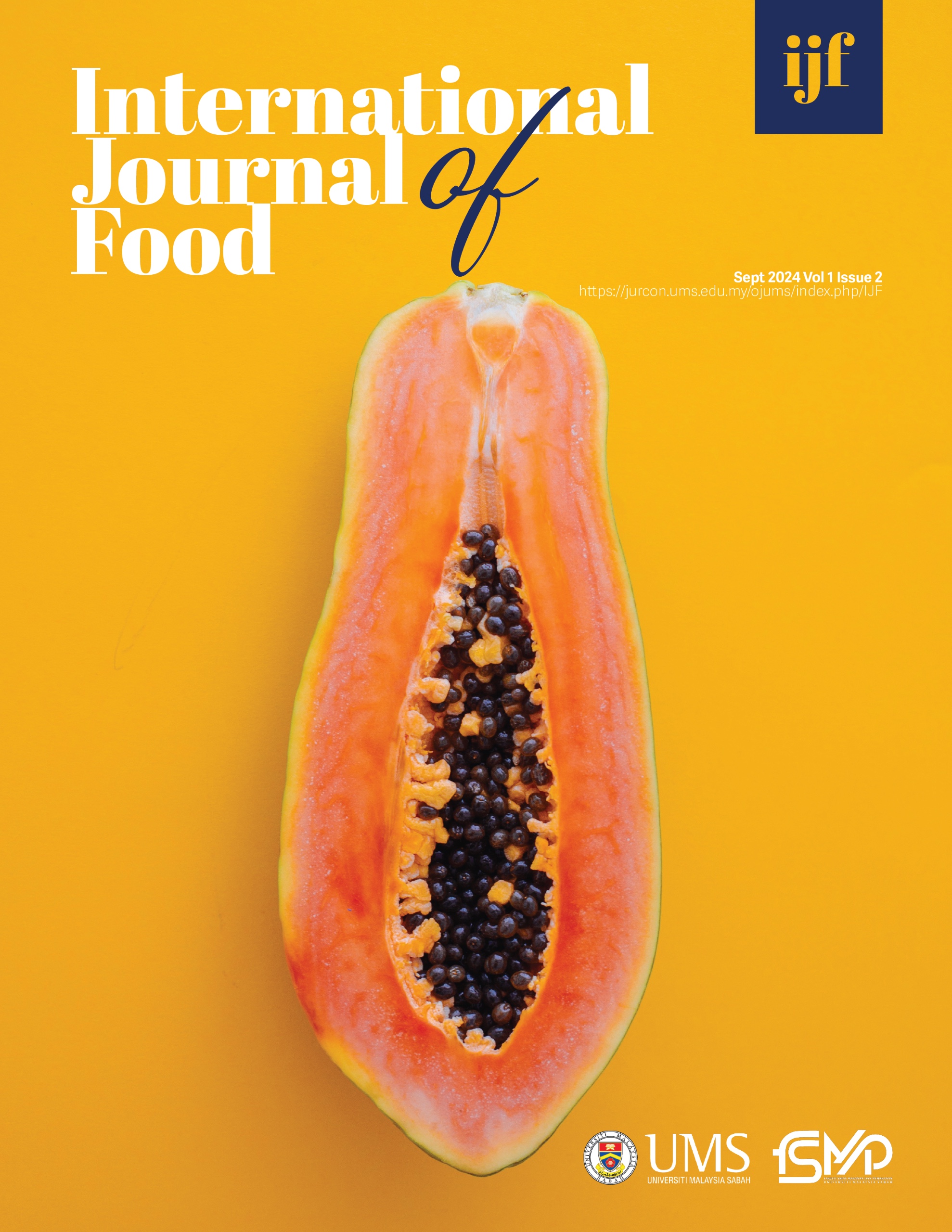Quality and antioxidant activity of Mulberry (Morus alba) bread
DOI:
https://doi.org/10.51200/ijf.v1i2.4892Abstract
Innovative food products with health benefits are increasingly becoming popular over the past decade. Therefore, an alternative to produce bread added with composite flour to increase its nutritional value has been developed. This research was conducted to determine the quality of bread added with mulberry powder. Bread quality was assessed through sensory evaluation, bulk density, texture profile analysis (TPA), colour, nutritional value, and antioxidant activity. Five bread formulations were produced with the addition of mulberry powder at 0% (control), 1% (F1), 2% (F2), 3% (F3), and 4% (F4). Through sensory evaluation, the addition of mulberry powder at 1% (F1) obtained the highest mean score value for most attributes and therefore was the best formulation. The bulk density of the mulberry bread increased with the addition of mulberry powder from 0.14±0.00 in F1 to 0.16±0.00 in F4, indicating a denser texture that hindered proper expansion during baking. Texture profile analysis showed that F1 possesses the lowest hardness of 3.16±0.02 and stickiness of 2.24±0.03 compared to F2, F3 and F4 but still showed no significant difference for all attributes compared with the control bread which is a good indicator of bread texture. The values of hardness and stickiness increased with increase amount of mulberry powder, meanwhile, cohesiveness and springiness decreased. Nutritional value analysis showed the bread contained a moisture content of 32.11±0.35%, ash (0.08±0.00%), protein (11.60±0.01%), fat (2.72±0.01%), crude fibre (0.70±0.08%) and carbohydrate (52.81±0.40%). The DPPH scavenging activity increased with the increased amount of mulberry powder from 13% to 26% in F1 to F4, respectively. In conclusion, the addition of mulberry powder in bread formulation could produce bread with high content of nutrient and fibre and increase antioxidant activity in bread. However, the use of mulberry powder should be limited as it affected the texture and organoleptic properties of bread.










